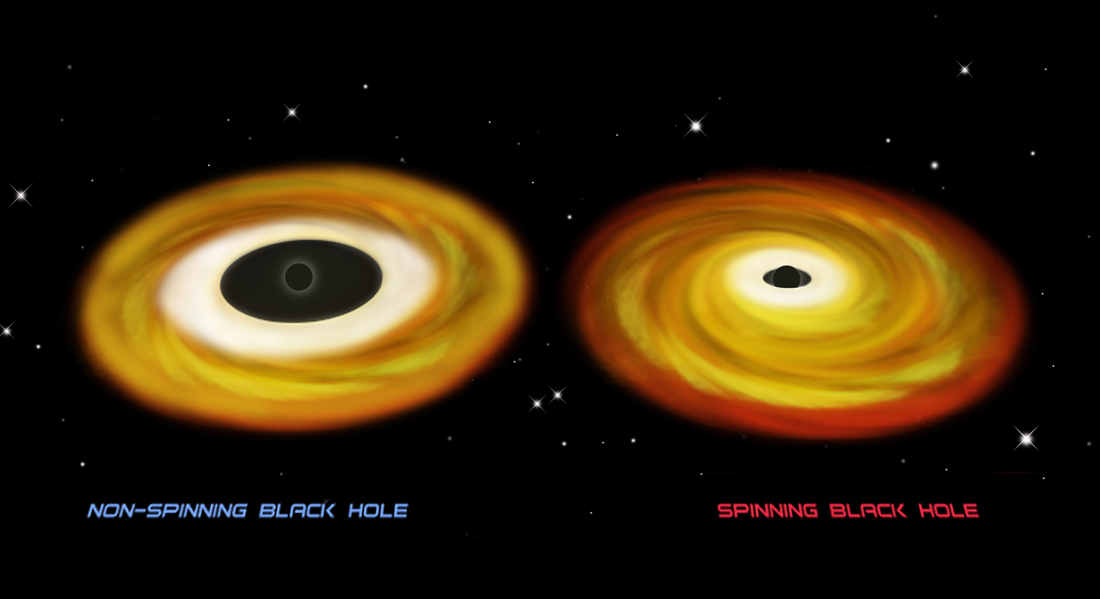
 Credit: NASA/CXC/M.Weiss
Credit: NASA/CXC/M.Weiss
ISCO Facto?
All stars spin, some fast, some slow. When stars collapse into compact objects at the end of their lives, conservation of angular momentum suggests that these small objects should spin much faster then their large stellar progenitors. Ultradense neutron stars, for example, can spin extraordinarily fast, rotating hundreds of times per second or more. But dense white dwarf stars, on the other hand, seem to rotate slowly, with spin periods of hours to years. There is one other type of compact descendent produced by stellar evolution: a black hole. Spin is one of only 3 properties which a black hole can possess. A spinning black hole has unusual effects on its surrounding spacetime, too. Astronomers have now tried to directly measure the spins of black holes by measuring one of these spacetime effects. The image above shows one way in which spacetime changes around an accreting black hole. If the black hole is not rotating at all, there's a minimum distance (6 times the black hole's gravitational radius, sometimes called the Schwarzschild radius) within which material cannot orbit the black hole. This sets an effective limit to how close the inner edge of the accretion disk can get to the black hole's event horizon (pictured above left). However, if the black hole is spinning, this inner edge can approach the event horizon (as shown on the right). This limit is called the innermost stable circular orbit distance, or ISCO for short. Astronomers can measure the ISCO by determining the type of radiation emitted by the accretion disk. Using this technique, astronomers have been able to measure the rotation rates of a handful of accreting black holes. They find a range of spins, with some black hole systems rotating near the maximum rate allowed by physical laws.
Published: April 2, 2012
<
HEA Dictionary ● Archive
● Search HEAPOW
● Other Languages
● HEAPOW on Facebook
● Download all Images
● Education ● HEAD
>

Each week the HEASARC
brings you new, exciting and beautiful images from X-ray and Gamma ray
astronomy. Check back each week and be sure to check out the HEAPOW archive!
Page Author: Dr. Michael F. Corcoran
Last modified Monday, 26-Feb-2024 17:21:54 EST


